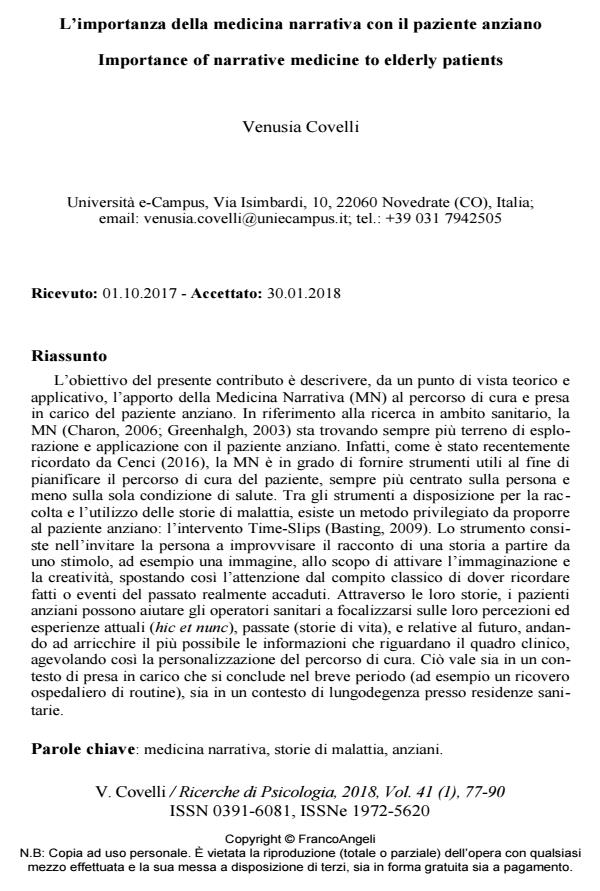Importance of narrative medicine to elderly patients
Journal title RICERCHE DI PSICOLOGIA
Author/s Venusia Covelli
Publishing Year 2018 Issue 2018/1
Language Italian Pages 14 P. 77-90 File size 188 KB
DOI 10.3280/RIP2018-001006
DOI is like a bar code for intellectual property: to have more infomation
click here
Below, you can see the article first page
If you want to buy this article in PDF format, you can do it, following the instructions to buy download credits

FrancoAngeli is member of Publishers International Linking Association, Inc (PILA), a not-for-profit association which run the CrossRef service enabling links to and from online scholarly content.
The present paper aims to describe, from a theoretical and application point of view, the contribution of the Narrative Medicine (NM) (Charon, 2006; Green-halgh, 2003) to the care of elderly patients. With reference to healthcare research, NM is finding a breeding ground for its application with elderly patients. In fact, as Cenci recently stated (2016), NM might provide useful tools in order to better plan the elderly patients’ pathway of care, more centered on the person and less on the health condition alone. Among all available tools for collecting and using the illness stories, one is privileged for elderly patients: the Time-Slips intervention (Basting, 2009). This intervention consists of inviting the person to improvise a story on the basis of a stimulus, such as an image or a drawing, in order to activate imagination and creativity, thus shifting the elderly patients’ attention from the request to remember past events or facts, which is often the case of some task. Throughout their stories, elderly patients might help healthcare professionals to focus on their current experiences (hic et nunc), past experiences (life stories), and related to their future, so to enrich their clinical chart with much more information about their illness experience, thus facilitating the personalization of their pathway of care. This is worth both in a context of care that finishes in the brief period (hospitalization for a routine checkup), and in a long-term care facility.
Keywords: Narrative medicine, illness narratives, elderly patient
Venusia Covelli, L’importanza della medicina narrativa con il paziente anziano in "RICERCHE DI PSICOLOGIA " 1/2018, pp 77-90, DOI: 10.3280/RIP2018-001006